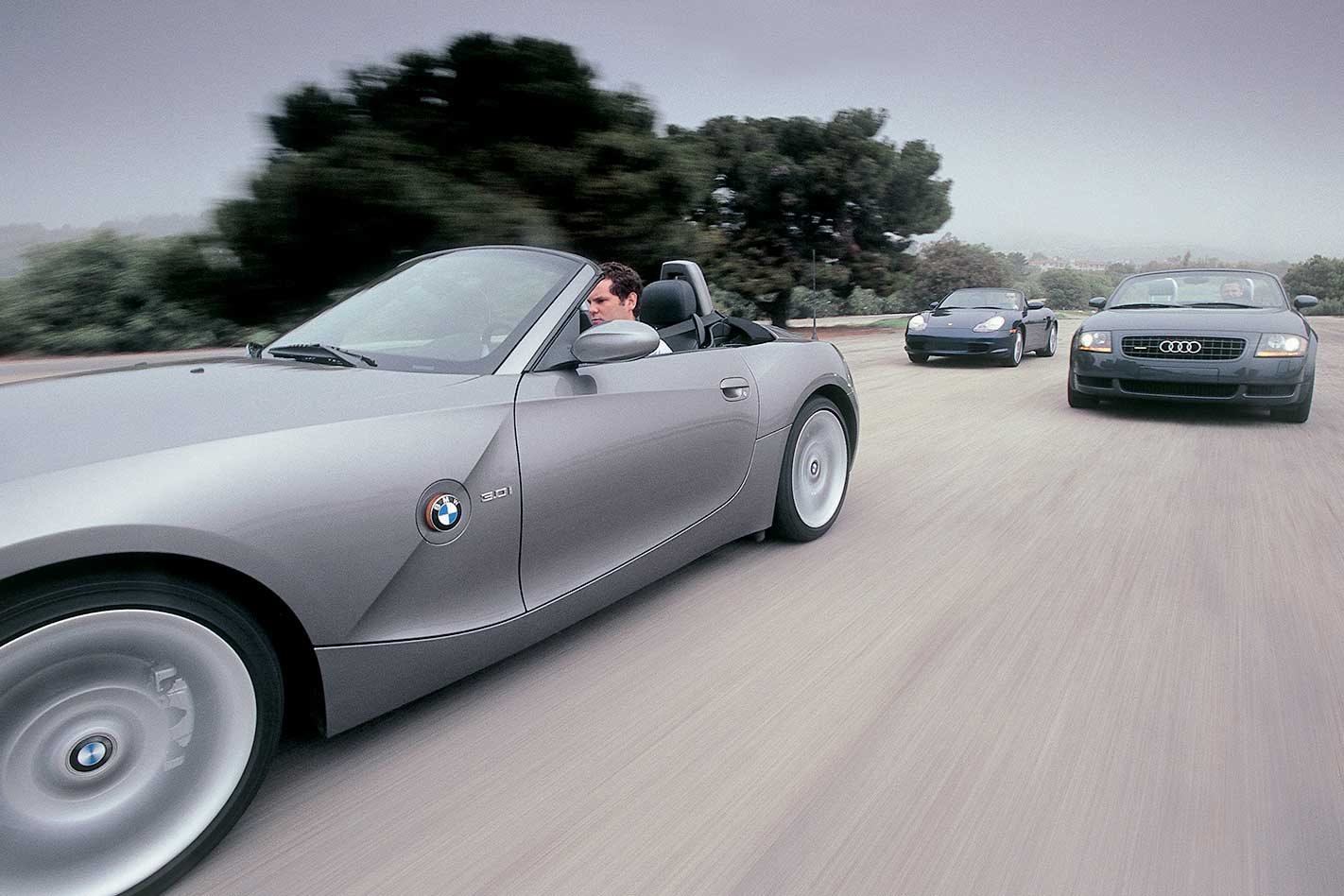Selecting a winner in any match-up is difficult when the cars are closely matched. But after five days and 1760km in the new BMW Z4 3.0i, facelifted Porsche Boxster 2.7 and the Audi TT quattro Roadster, picking a winner from three so similarly-matched cars was going to be tougher than first thought.
This review was originally published in MOTOR’s May 2003 issue
Not on sale locally until June, we picked up our gunmetal-grey BMW Z4 and its rivals in Los Angeles, California. While the Beemer was the visual attention-getter of the group, it immediately lost important points in the ride department, mainly because of the optional sports suspension and the extra-cost 18-inch alloys shod with Bridgestone Potenzas (225/40 front, 255/35 back).
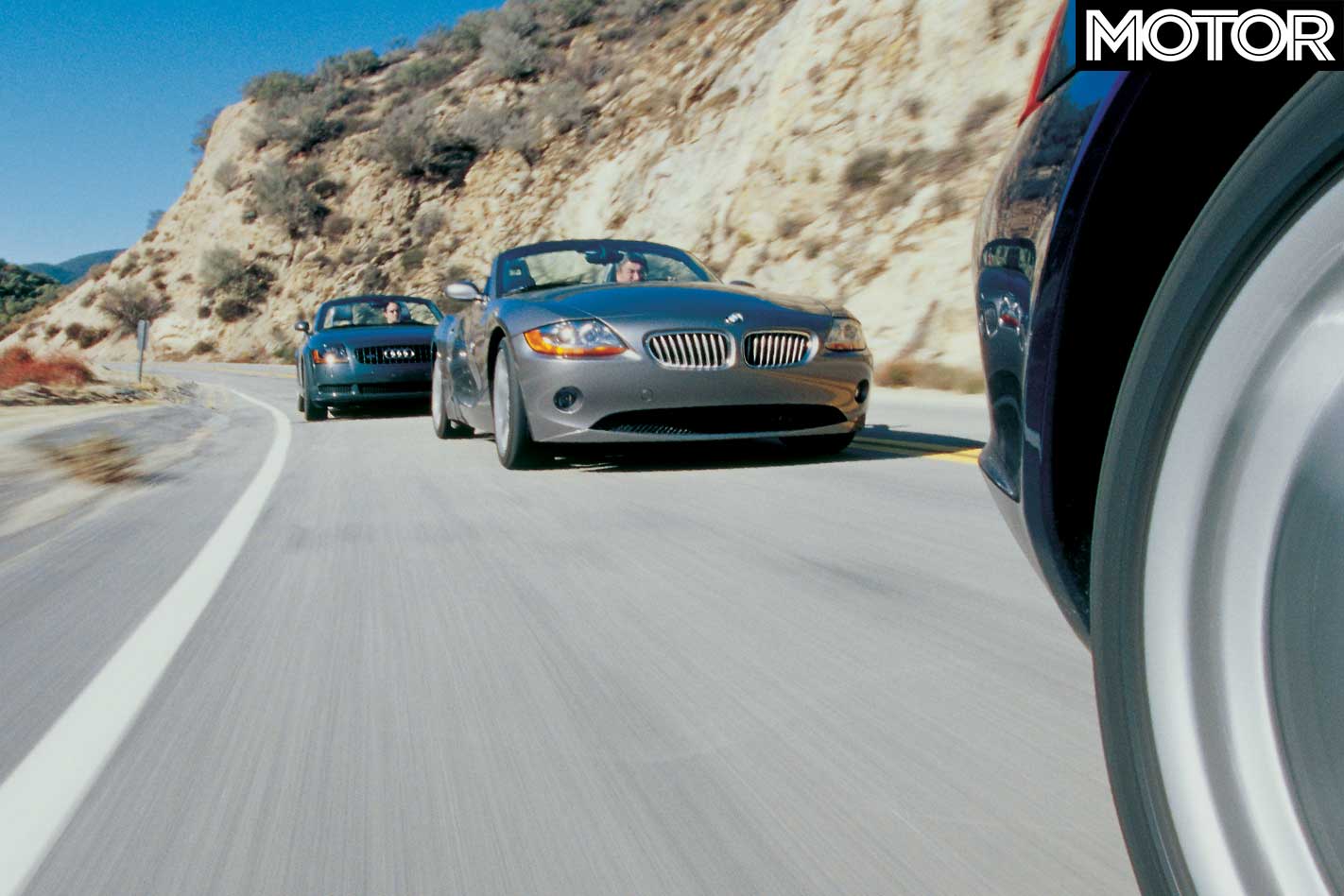
The Boxster ran wider-than-normal 18-inch wheels, but the big Michelin rubber (225/40, 265/35) worked in surprising harmony with the standard suspension tieing it down without shaking its occupants. The Audi was also shod with 18s (four 225/40 Conti SportContacts), in combo with the standard spec springs and shocks. And like the Boxster, it soaked up road irregularities with aplomb.
The specification of our breezy trio is similar in ability yet dramatically different in execution. Audi employs a small displacement 1.8-litre 20-valve turbocharged four-cylinder which delivers 165kW and drives all four wheels.
Porsche relies on a 2.7-litre 24-valve flat-six mounted amidships and churning out 168 kW. BMW has installed its trademark 3.0-litre 24-valve inline six, good for 170kW, aft of the front axle but still up front.
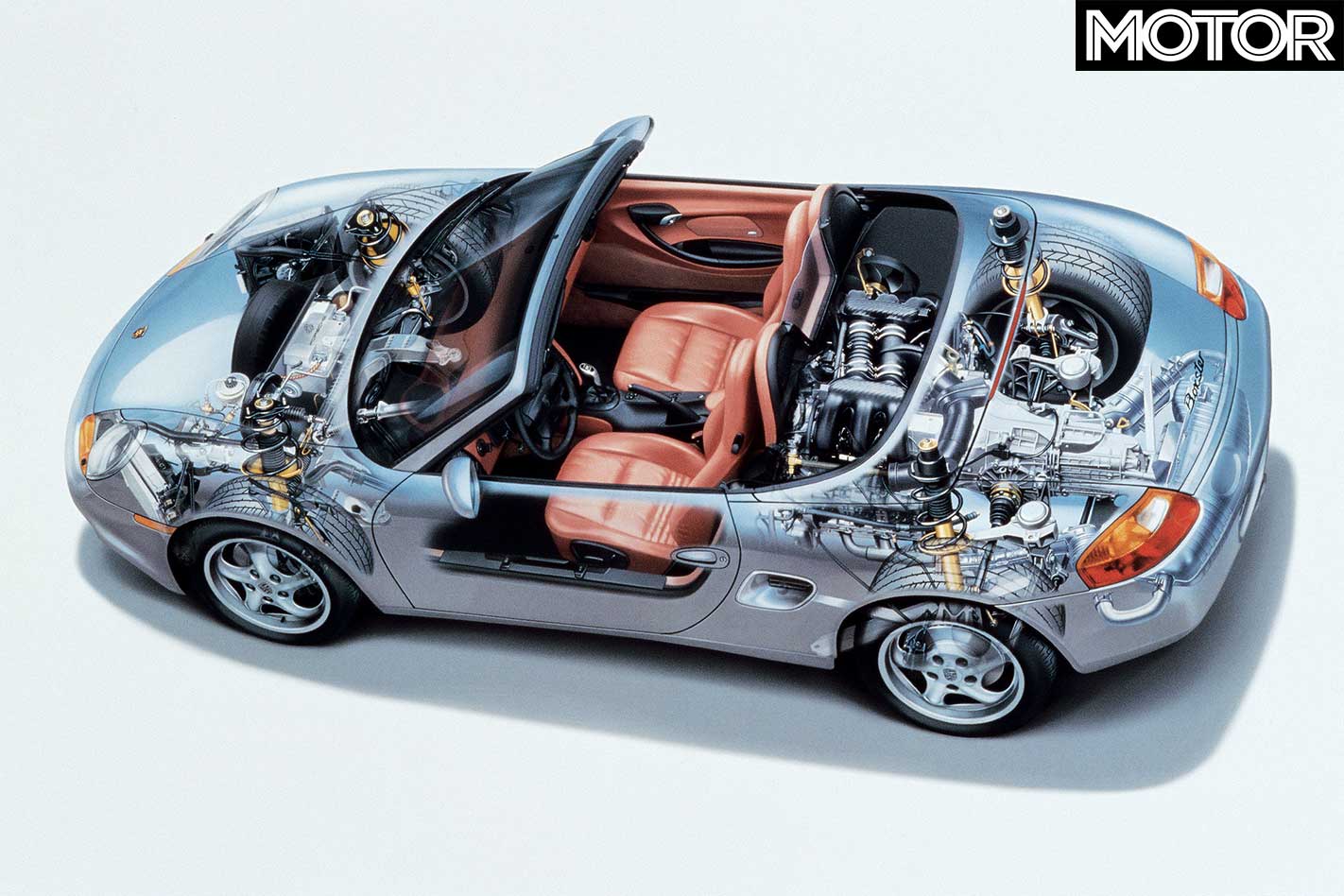
While the TT quattro ($92,850) and the top-notch Z4 ($92,000) offer six gears, the Boxster ($108,500) makes do with five. Although the three engines are only 10 kilowatts apart, slowest to fastest in the 0-100 spans just 0.8 seconds. How come? The weight chart tells it all.
Handicapped by the unique all-wheel-drive system, the Audi tips the scales at 1475 kilos. The BMW weighs only 1365kg, and the Porsche is lighter still at 1275kg. Thanks to its close gearing, the Z4 takes a mere 5.9 seconds to get to 100km/h.
The Porsche’s wider-spread over a broader rev range loses 0.5 sec in the process and although the Audi has that coveted sixth gear, it suffers from turbo lag and drivetrain friction. As a result, it requires a more leisurely 6.7 seconds. But while none holds a clear stopwatch advantage over the other, each has its highlights.

The long-legged, high-revving Boxster builds a small gap above 160km/h, and with a top speed of 253km/h it also is the fastest car in this group but only by a token margin. The 250km/h BMW wins the traffic lights GP by a whisker, but it drops back to the middle of the pack when you enter the crucial 60 to 130km/h bracket.
The 237km/h TT has quantifiably more bottom-end grunt than its rivals, yet through the twisties it’s not so much the engine but the grippy chassis that helps it to stay in touch. As far as the fun factor is concerned, the Audi is admittedly no match for the rear-wheel-drive, opposite-lock faction.
But when a sudden shower sprinkled the road, the quattro system instantly elevated the TT to a plateau of its own. No, it’s not just the superior roadholding and traction that do the trick, the Audi also scores with confidence-inspiring handling at the limit: this car will never play foul.
The Z4 offers a chameleon-like kaleidoscope of abilities thanks two separate dash buttons. One is labelled DTC, the other DSC. Instead of changing the handling from uneventful to tail-happy by completely deactivating stability control (DSC), BMW has created an intermediate mode labelled dynamic traction control (DTC).

It permits a little bit of slip and a little bit of slide, but only under 64km/h and 0.4g. Which is essentially the perfect setting for a series of wet esses where skill level need not be around Schumacher levels to have fun.
Keep the button pressed for a few seconds longer to deactivate the remaining chips and with DSC in the off position, the BMW demands it be handled with care. This, despite the 49.5:50.5 front-to-rear weight distribution, the low centre of gravity and wide track.
The other wizard button is known as FDC, short for a ‘Germanic’ Fahr Dynamic Control. Push it to get a faster kick out of the throttle response and a stiffer calibration of the electric power steering. FDC marks the transition from cruiser to sports car, so you should only select it on the open road where ultra-sharp reflexes are much more welcome than around town.
In theory, the electric power steering combines the best of both worlds: it’s speed-sensitive and adaptive, linear and transparent. As good as it is though, it still falls short of the three-dimensional feedback, the progressive turn-in action and the reassuring directional stability offered by a good hydraulic system.
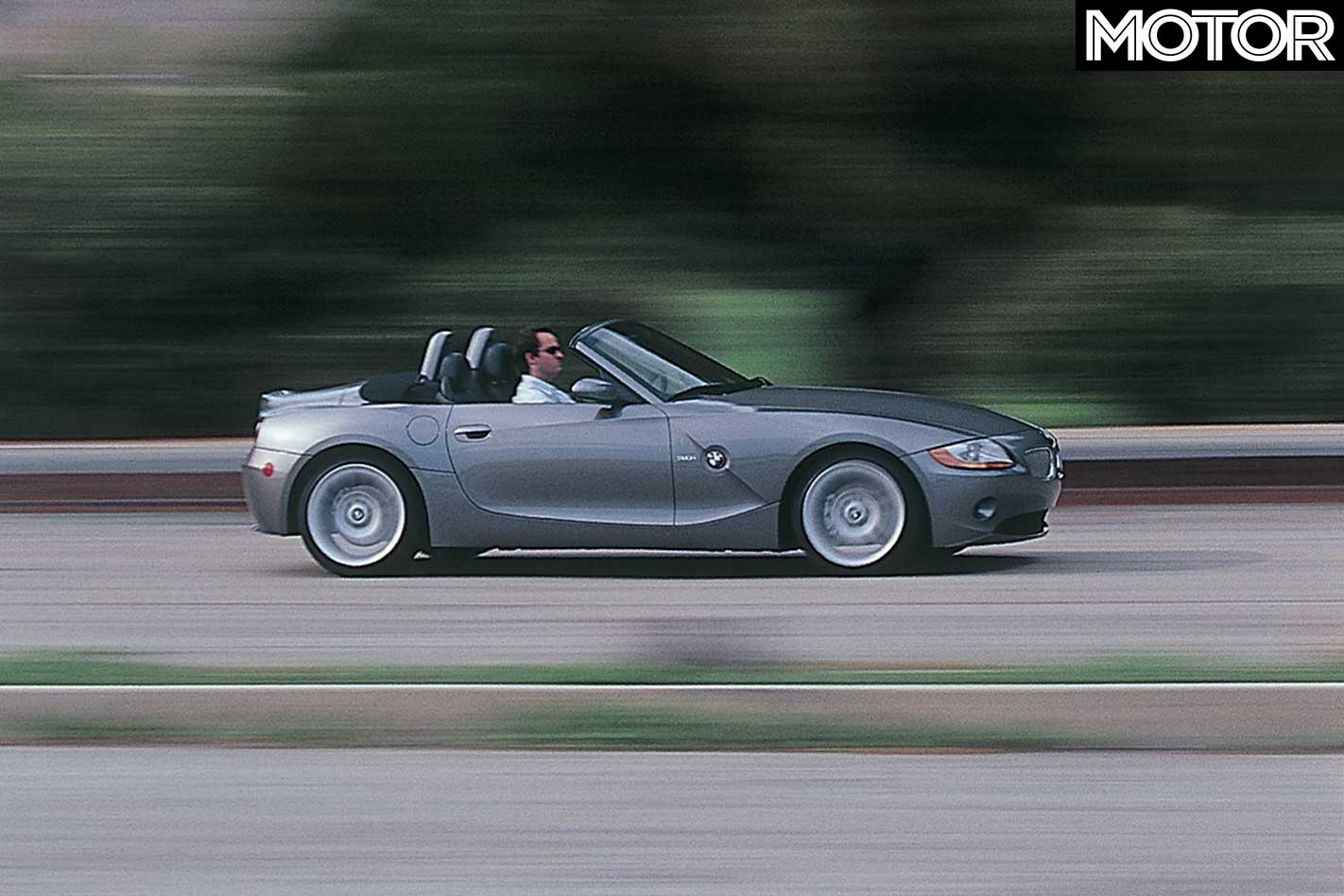
The Porsche does most things the old-fashioned way. Even its PSM stability control is optional. Like the BMW engine, the six-cylinder boxer has adjustable camshafts to boost low-end torque. The flat-six is (in comparison to its inline contender) short of displacement (by 300cc) and torque (by 260 against 300Nm), but it has a higher rev limit (7000 vs 6500rpm) and it uses less fuel.
Under identical conditions, the Boxster averaged 11.9l/100km and while the TT was only marginally worse (12.0l/100km), the Z4 was the thirstiest of the lot at 13.0l/100km. To compound the thirst, the BMW’s 55 litre tank is also the smallest, followed by the Audi (62 litres) and the Porsche (64).
Although there was seldom a queue for the TT’s keys, the quattro does have some shining moments. Take for instance the interaction between throttle and turbocharger.
Above 1500rpm, the whistle-and-whine sung by the blower signals instant oomph, and when the hammer drops, this car will indeed rocket ahead. On the debit side, the Audi suffers from a low-end throttle response lag, from a rubbery clutch and a notchy six-speed gearbox.
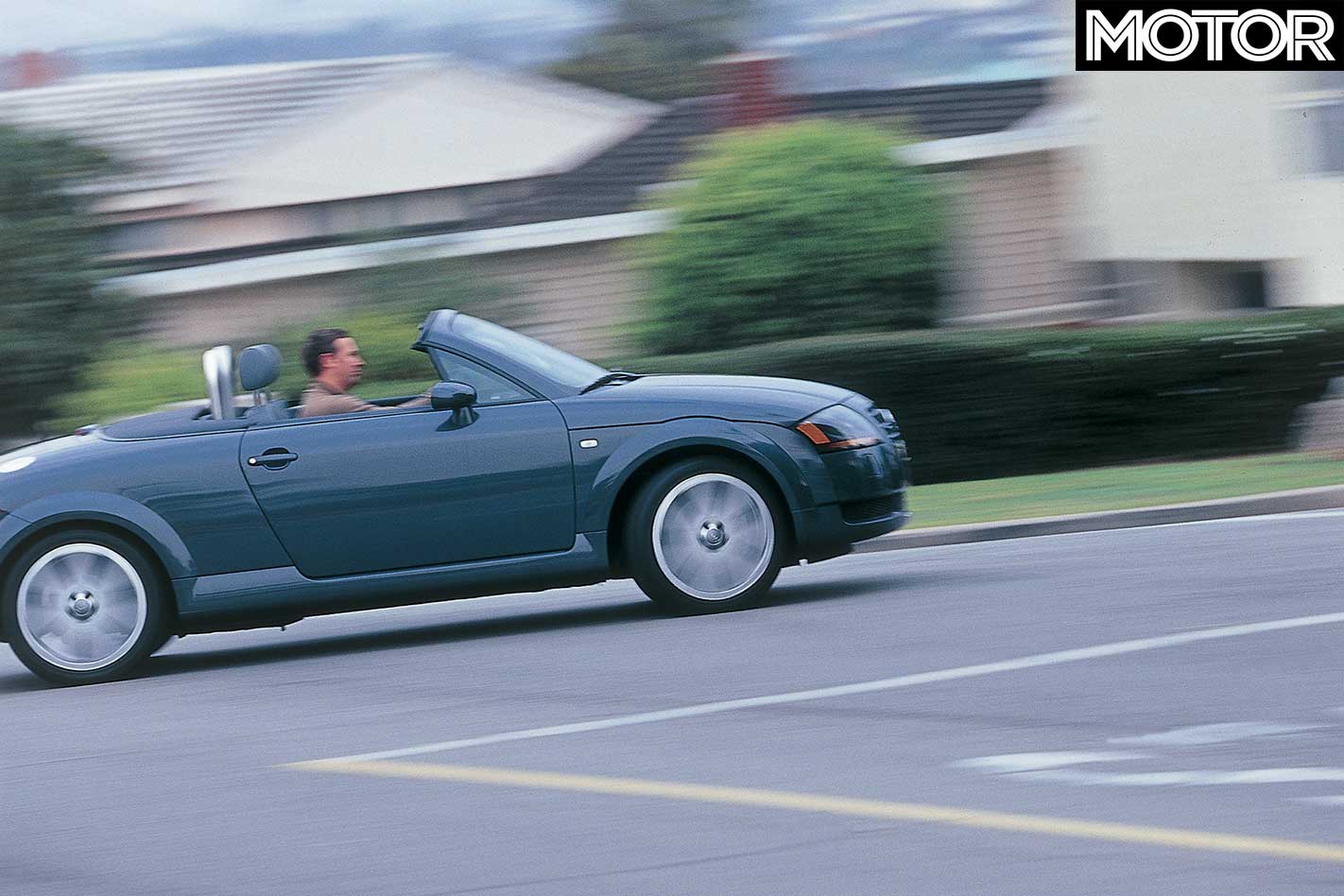
The steering is sufficiently light, direct and precise, but it can never obscure the fact that the other job of the front wheels is to drive. Through tight corners, understeer comes calling and it’s only eased by winding off some lock and letting the chassis settle back into something more neutral.
Although the brakes are attentive and strong, they don’t bite with real vigour. There is no doubt about it: out of these three, the TT displays the least amount of pure sports muscle.
But the Audi has the best fit and finish, the nicest cabin and the highest-quality materials. Its trim is supplied by cows not chemical nerds, its plastics are coloured and grained to perfection, its carpets and aluminium accents are truly worthy of a premium brand, and its cockpit is roomy as well as ergonomically flawless. As far as the driver environment is concerned, the other two roadsters present don’t even come close, period.
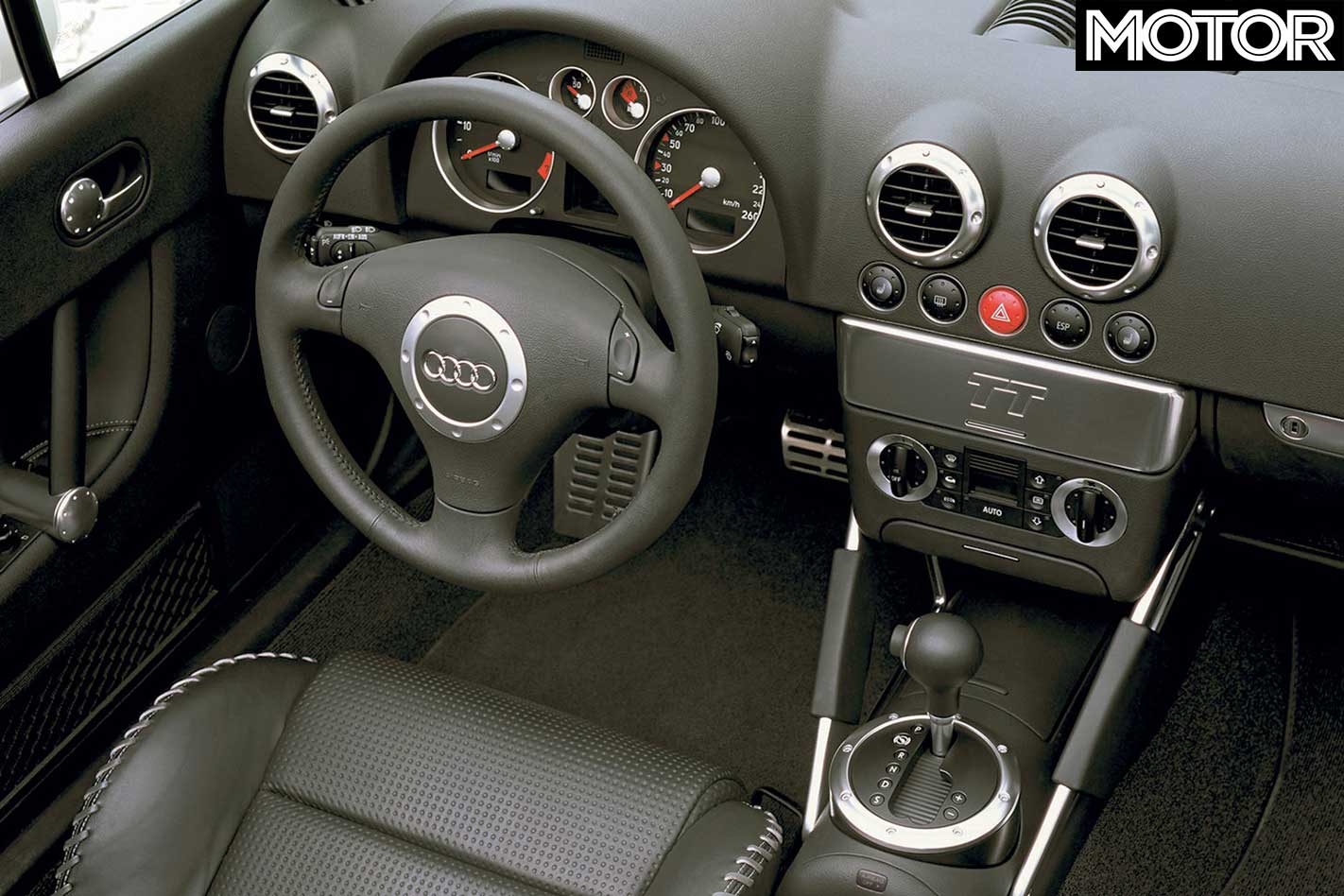
The Boxster may be well put together and its coarse synthetic surfaces may be made to last, but it is obviously short of legroom, the steering column is only adjustable in reach, and the AC panel was borrowed from a long-discontinued generation of Audi saloons. And we’re not done with this one yet.
The instruments are partly obscured, the secondary controls are scattered and tiny, the standard specification barely makes the grade, and there are more blank switches than one can tolerate in this price and this class.
You believe things cannot get worse? Then hop in the Bee-Emm and think again.

Never mind the curved furniture-style brushed-alloy dashboard which may have been part of a Korean fridge in a previous life.
Never mind the absence of any oddments space. Never mind the out-of-reach position of the minor push-buttons, the cheapo plastics and the occasionally casual build quality. What people will find really irritating is the position of the (left hook) steering wheel, slightly offset and tilted. Expect a mirror image in right hand drive.
The small and poorly legible instruments are also in line for criticism, as is the mediocre visibility and the thinly padded seats which don’t provide enough lateral and lumbar support. The cabin of a sports car developed from scratch should at least get the fundamentals right.
The Porsche, which underwent a minor facelift in mid-2002, now has a heated glass rear window, a proper glovebox and push-button releases for the two luggage compartments.
The roof of the Boxster, which does without a cover panel when open, served as role model for the canvas top of the Z4 and it uses an equally clever accordian linkage. When switching from sun worshipper to shade seeker, its weather shield even outperforms the previous record holder by seven against twelve seconds.

The TT needs 15 seconds to open or close, but the elapsed time doesn’t include fitting the tonneau cover which you stash or clip into place. When not used, it reduces the volume of the boot – which is a bad thing, because the boot of the Audi is already modest. Graced with the lowest loading lip, the Z4 will swallow about 60 per cent more than the TT.
Early in the morning and after dark, with roofs up and the heaters on, each car played its own unmistakable tune. The TT’s tone is a flat, muted brap, with some whistles and flutes from the flow of pressurised air with every upshift.
The sounds of the Boxster are more modern, more mechanical with an ironic smooth/harsh bark that Porsche sixes emit. The Z4 sang a varied tune, a low-down almost-muffled growl, increasing to a heavy metal thrash to its redline, a note so metallically sweet it encourages downshifts and a throttle blip just for the heck of it.
The Audi holds the road like a moving magnet, and its all-weather traction is compelling enough to take on a rack-railway, but unfortunately the TT does not handle as well as it should. There’s too much body roll, too much understeer, too much passivity and not enough feedback. If it’s sure-footedness you’re after, this is the car for you. But if stimulation and satisfaction is what you want, look elsewhere.
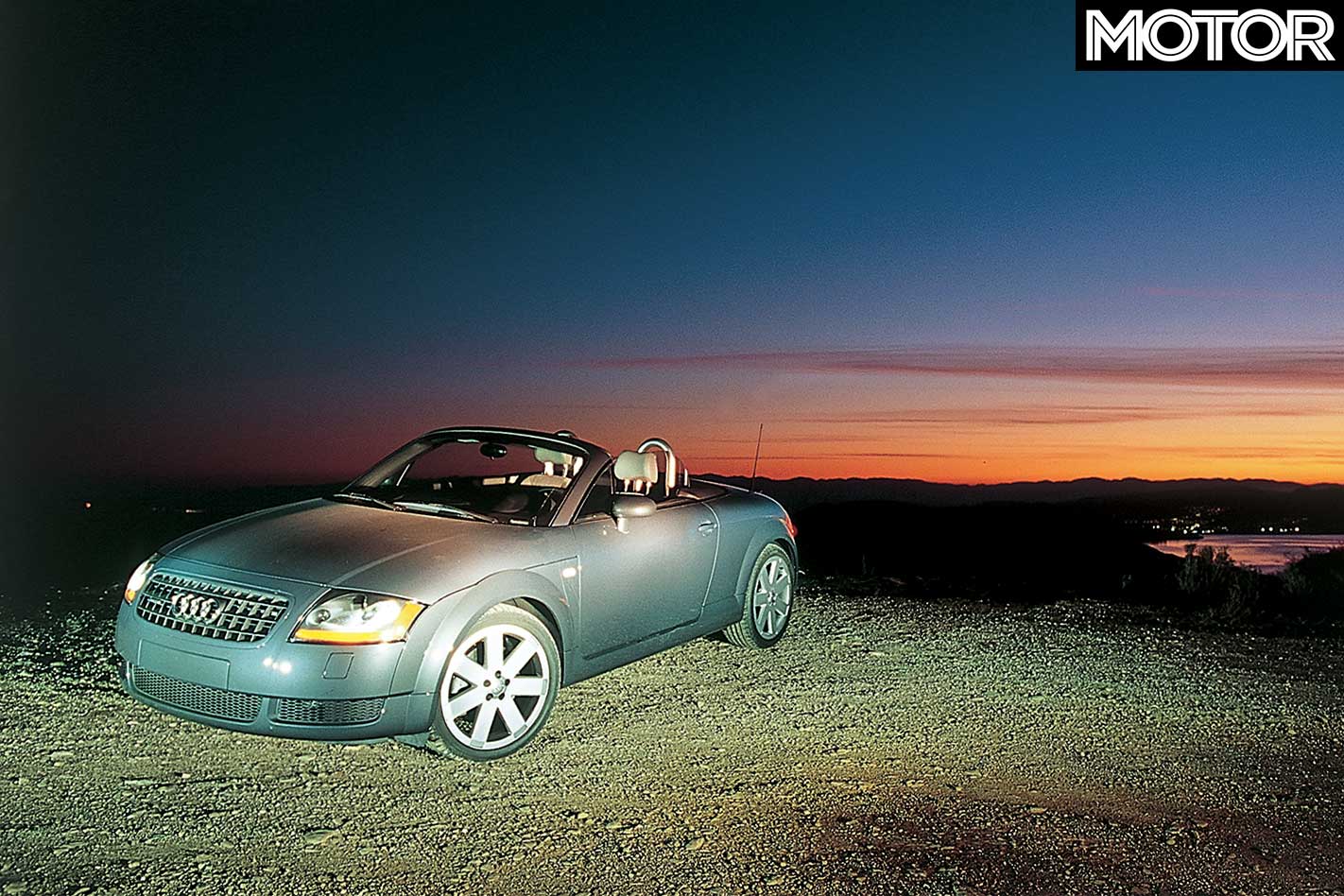
Like the Z4. On dry pavement, it’s an amazingly talented entertainer but at the same time it is also hard work. Especially when fitted with the lowered and stiffened M-Technic suspension, you’re constantly fighting the rear axle, the g-force-defying front axle and the steering which is borderline acceptable in terms of weight and feedback.
A lot fun for an hour or two, but over a long day the BMW threatens to wear you out. It offers zero ride comfort yet calls for 100 per cent attention. Compared to a Z4, the M3 is a softie.
The overall balance that is so nearly right gets spoiled by the calibration of the controls. The throttle response is lightning-quick, the brakes perform at the first dab on the pedal, the gearlever clickety-clicks through the gate, the chassis absorbs cat’s eyes for breakfast and manhole covers for desert. But the steering can’t make up its mind.
It lacks the reassuring stiffness you appreciate at autobahn speeds, it loses interest as you start winding on more lock, and it keeps missing the cue when you want it to turn-in or to self-centre.
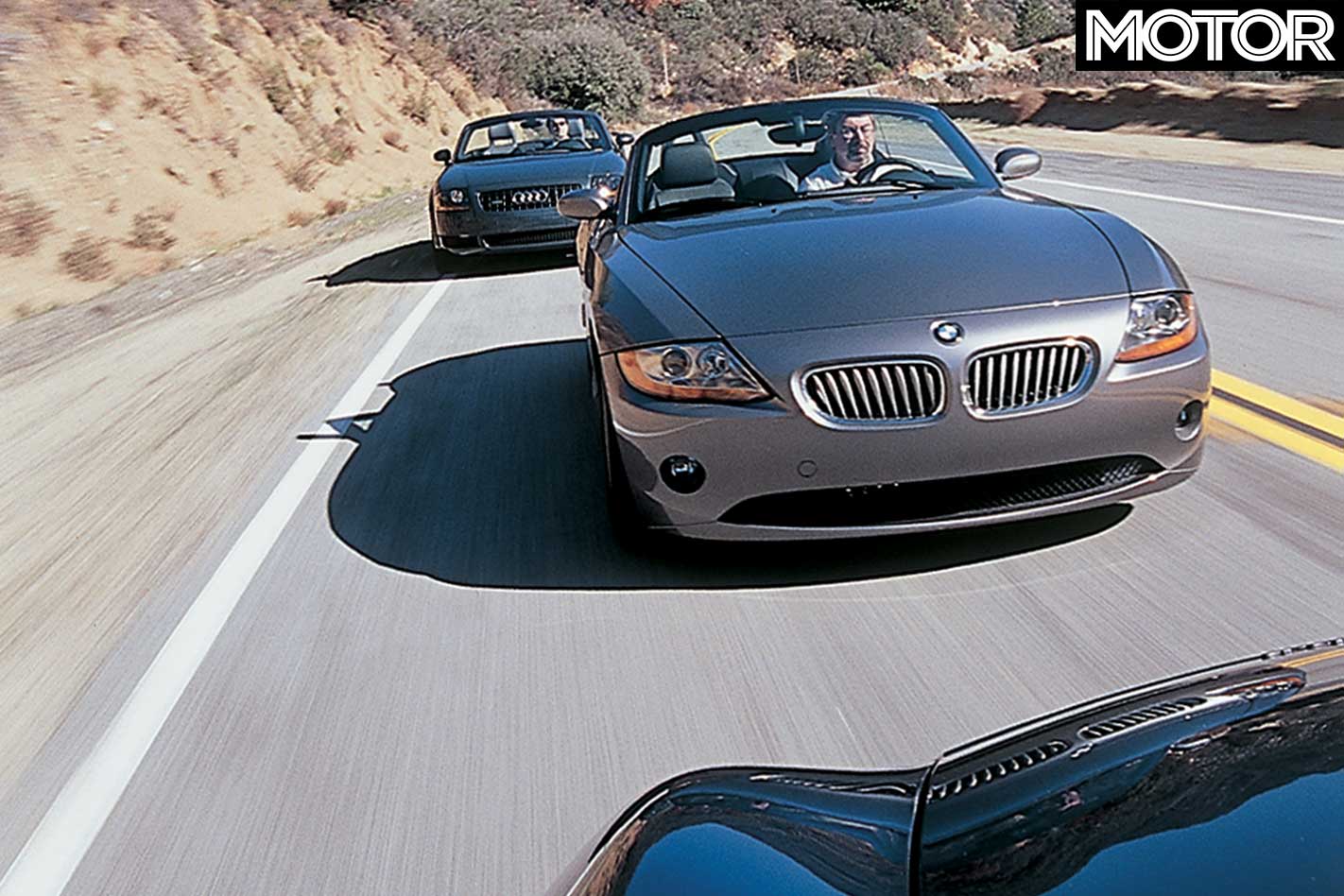
A revised steering software and a more human suspension setting is probably all it takes to fix the Z4. As things stand, however, the Boxster narrowly eclipses the BMW. You see, the Porsche is such a well-balanced machine, quick and benign, committed and coherent, raw-edged and polished, puristic and civilized. It also is an easy car to drive fast, a forgiving car that won’t penalise every mistake.
Go ten-tenths in the Z4 and all the warning lights flash and the chassis is sweating, working overtime. Do the same thing in the Boxster, and it soon becomes clear that high speed and total composure are perfectly compatible elements after all.
The Porsche is not as extroverted as the BMW and not as introverted as the TT. It’s homogenous and creamy, a little toned-down perhaps but no less convincing. If you hate drama, take the Audi. If you love drama, take the Z4. If you couldn’t give a toss about drama, take the Porsche.

The mid-engined roadster will pump as much adrenaline as you can handle, but at the same time will always deliver in that sublime, telepathic, sweet-mannered, unruffled way, seven days a week, rain or shine, distance no object, any challenge accepted.
Come to think of it, crowning the winner wasn’t so hard after all.
Home Groan ‘Made in Germany’ brings cred. But what if it’s not?
German cars, designed by Germans, built by Germans to be driven bloody quickly on German roads. If this sounds familiar, and contains some of the reasons why you believe the Germans build such cracking fast cars, think again.
BMW’s still a proud Bavarian company. Largely family-owned, it’s a Munich icon. But BMW builds 3-Series models in South Africa and it opened its plant in Spartanburg, South Carolina in 1995 to build the original Z3 (as previewed in the James Bond film Goldeneye).
Spartanburg now churns out the X5 variants and the Z4 for global consumption. Today, around 85,000 cars are produced each year by the 3500-strong work force.
Audi’s TT is built in Györ, Hungary, even though the galvanised steel bodies are stamped, assembled and painted at GHQ in Ingolstadt, Germany. Audi’s also got an enormous plant in China where it builds A6s for fun and profit.
Porsche has stayed true to its roots, sticking to the outer suburbs of Stuttgart, right? Err, no.
It might not have gone as far as to jump continents, but it has built a factory in Leipzig (all right, it’s a joint venture with Volkswagen) to build the Cayenne. It’s still Germany, but it’s in the old East Germany, and to residents of the old West Germany, apparently, that makes a difference.
What about Mercedes-Benz, that unmistakably German brand? Just down the road from BMW’s Spartanburg facility (okay, way down the road), in Tuscaloosa, Alabama, Mercedes-Benz set up shop to build its off-roading M-Class.
Fast Facts
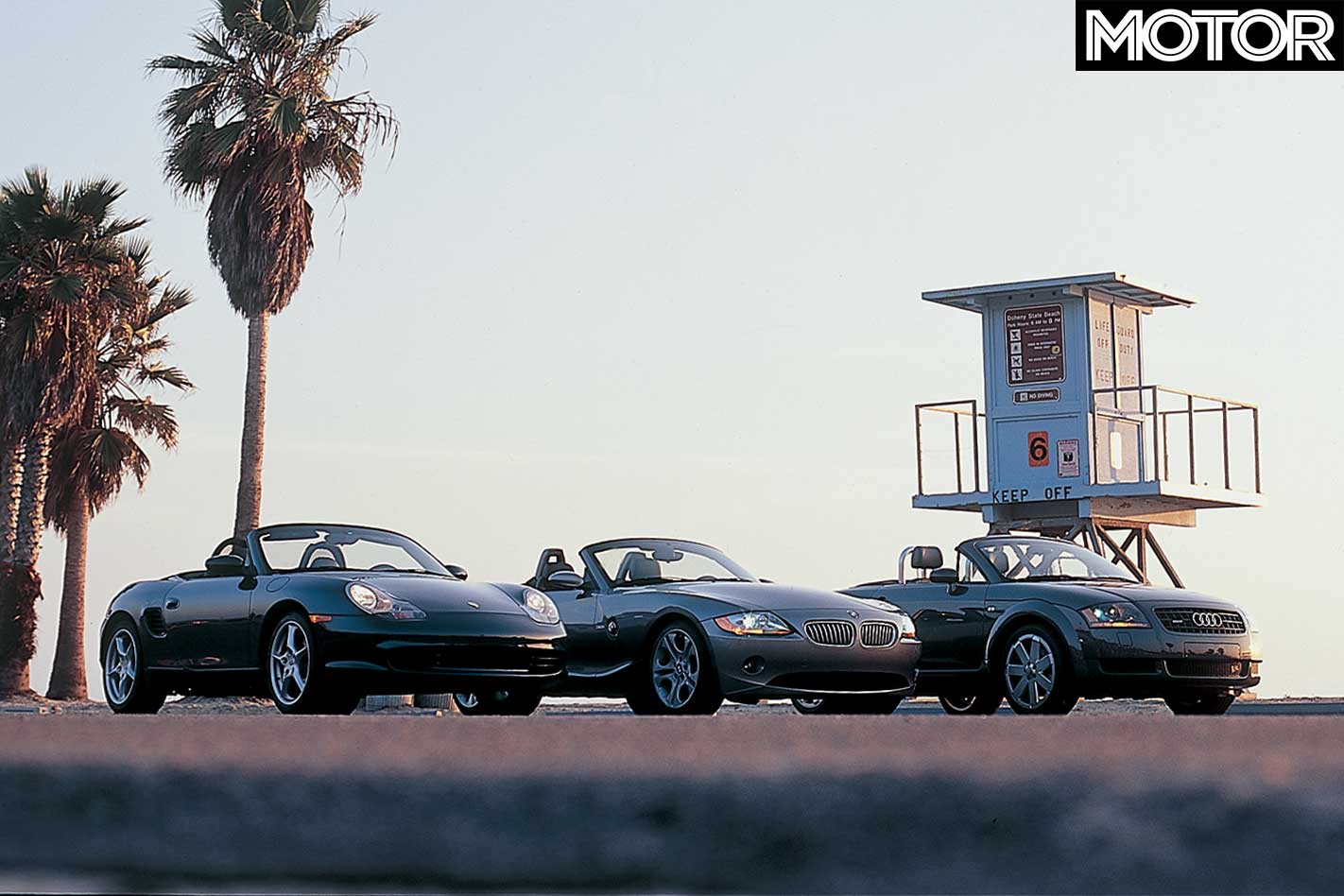
| u00a0 | 2003 Porsche Boxster | 2003 BMW Z4 3.0i | 2003 Audi TT Roadster |
| BODY | 2-door convertible | 2-door convertible | 2-door convertible |
| DRIVE | rear-wheel | rear-wheel | all-wheel |
| ENGINE | mid-mounted 2.7-litre DOHC, 24V flat-six | front-mounted 3.0-litre, DOHC, 24V, inline-six | front-mounted 1.8-litre, DOHC, 20V inline-four, turbo |
| BORE/STROKE | 85.5mm x 78.0mm | 84.0mm x 89.6mm | 81.0mm x 86.4mm |
| COMPRESSION | 11.0:1 | 10.2:1 | 9.0:1 |
| POWER | 168kW @ 6300rpm | 170kW @ 5900rpm | 165kW @ 5900rpm |
| TORQUE | 260Nm @ 4700rpm | 300Nm @ 3500rpm | 280Nm @ 2200rpm |
| WEIGHT | 1275kg | 1365kg | 1475kg |
| POWER/WEIGHT | 132kW/tonne | 125kW/tonne | 112kW/tonne |
| TRANSMISSION | 5-speed manual | 6-speed manual | 6-speed manual |
| SUSPENSION (f) | MacPherson struts, coil springs, anti-roll bar | coil-over struts, coil springs, anti-roll bar | MacPherson struts, coil springs, anti-roll bar |
| SUSPENSION (r) | MacPherson struts, coil springs, anti-roll bar | multi-link, coil springs, anti-roll bar | double wishbones, coil springs, anti-roll bar |
| L/W/H | 4320/1780/1290mm | 4091/1781/1299mm | 4041/1764/1348mm |
| WHEELBASE | 2415mm | 2495mm | 2429mm |
| TRACKS | 1455mm (f); 1528mm (r) | 1473mm (f); 1516mm (r) | 1528mm (f); 1505mm (r) |
| BRAKES (f) | 298mm ventilated discs, four-piston calipers | 300mm ventilated discs, single-piston calipers | 312mm ventilated discs, single-piston calipers |
| BRAKES (r) | 292mm ventilated discs, four-piston calipersu00a0 | 294mm ventilated discs, single-piston calipers | 239mm ventilated discs, single-piston calipers |
| FUEL | 64 litres, PULP | 55 litres, PULP | 62 litres, PULP |
| WHEELS | 18 x 7.5-inch (f); 18 x 9.0-inch (r), alloy | 18 x 8.0-inch (f); 18 x 8.5-inch (r), alloy | 18 x 8.0-inch (f & r), alloy |
| TYRE SIZES | 225/40 ZR18 (f); 265/35 ZR18 (r) | 225/40 ZR18 (f); 245/35 ZR18 (r) | 225/40 ZR18 (f/r) |
| TYRE | Michelin Pilot Sport | Bridgestone Potenza RE040 | Continental SportContact |
| PRICE | $108,500 | $92,000 | $92,850 |
Our 5 Likes & Gripes
Audi TT
1 – All-paw grip inspires confidence… 2 – …but it’s duller than matt black when you’re on it 3 – Interior styling and quality set it apart from nearly everything else on the road 4 – Smarty pants electronics kill a lot of joy 5 – Surfing the fat wave of turbo torque
BMW Z4
1 – Bold styling will turn heads, and it grows on you 2 – Firm ride turns harsh if you option the 18s 3 – Lively handling delivers big thrills… 4 – …but overstep the mark and it could be a big spill 5 – Wail of the fabulous 3.0-litre straight six never gets tiresome
Porsche Boxster
1 – That badge will be enough for many… 2 – …and that is also enough for people to hate you 3 – Sublime, fuss-free performance on any day of the week 4 – Standard equipment is only average for the ask 5 – Flat-six warble is one of the great sounds in cars

